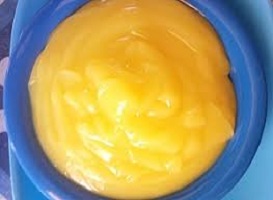Steaming: Healthy Moist-Heat Cooking Method
Steaming is a mild, fat-free cooking method that keeps the natural moisture in foods. It is a method of cooking using steam meaning in the urban dictionary
This method makes use of the steam from a simmering liquid (usually seafood broth, water, or wine) to transfer heat to, and cook, a food.
Steaming produces tender, chicken, moist fish and vegetables, leaving them full of flavor and not sodden, as boiling or even poaching does.
Steaming is a moist-heat method of cooking that works by boiling water which vaporizes into steam; the steam then carries heat to the food, cooking it.
Remarkably, steam’s full temperature is also 212 F, just like water.
Nevertheless, unlike water steam can be forced to surpass this natural temperature limit by pressurizing it.
The higher the pressure, the hotter the steam becomes. Cooking with pressurized steam requires specialized equipment.
Table of Contents
Steaming: Did You Know?
Steaming is one of the easiest, healthiest ways to cook vegetables.
Whether you use a steamer basket or the microwave method, this method of cooking is an easy way to get delicious, vibrant veggies, jam-packed with nutrients otherwise lost in other cooking methods.
Unlike boiling, which destroys up to 50% of vegetables’ nutrients, steaming doesn’t involve any water loss. For most vegetables, you steam, approx. half a cup worth contains roughly 25 calories and a multitude of vitamins and minerals.
Cooking With Steam Equipment/Machine
Electric multi cookers and pressure cookers make use of the power of steam in cooking.
However, you can steam foods in a conventional oven, on the stove-top, and in the microwave, all in fairly short order.
Above all, bamboo steamer baskets allow for steaming multiple ingredients with one pot or wok, and they can be lined with cheesecloth, parchment paper, and edible leaves.
Professional chefs use special equipment like perforated pans, but home cooks can achieve the same results with a strainer, strainer, saucepan, and lid, as well as a simple bamboo steamer.
How to Steam Without a Steamer
If you don’t have a steamer basket, try using a metal colander or a silicone placed inside the pot instead.
On the other hand, you can use aluminum foil and cap them on the bottom of a large pot before placing a heat-proof plate on top.
Steaming Times
In general, you can steam most veggies in 10 minutes or less using a steamer basket, subject to the size, though times can vary considerably
Steaming Food Benefits
In addition to being a simple cooking method, it is also a healthy way to prepare food.
Secondly, when you compare steaming to other cooking methods like boiling, steaming contains a lot of food benefits because many of the nutrients in vegetables are lost through boiling.
Also, the longer you cook the vegetables, the more their nutritional worth is lost.’
Most importantly, steaming preserves up to 50 percent more nutrients in the foods, and does not use fats in recipes. This makes steaming an advantageous cleaner cooking technique.
Steaming makes softer the fibers of vegetables and fruits, making them more easily digestible, for the body to absorb all that nutritional goodness.
Above all, it is highly advantageous as it preserves the natural shape as well as the nutrients present in the food.
However, the disadvantage of steaming is that it is a slow and gentle method of cooking.
What Kind Of Foods Can You Steam?
Steaming is perfect for foods that need moisture, and foods that should be soft and silky-smooth rather than crispy or scorched for example:
- Vegetables
- Meat and poultry
- Tamales
- Chinese steamed buns
- Hard-boiled eggs
- Rice
- Souffles, custards, and pastries
- Kinds of Seafood (lobsters/fish) – Seafood is particularly very good for steaming. Cooking en Papillote
Apart from food, you can also steam the face, hair and even the vagina (not advisable though).



